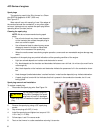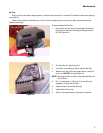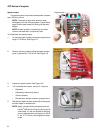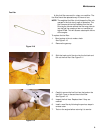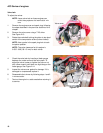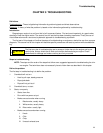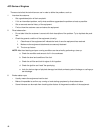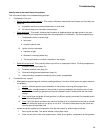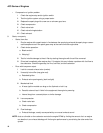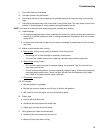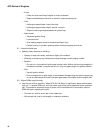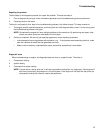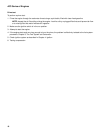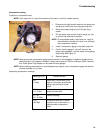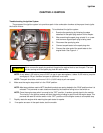AC3 Series of Engines
14
• Compression or ignition problem
I. Check the engine stop and/or ignition switch.
II. Test the ignition system using a proper tester.
III. Replace the spark plug with a new one or a known good one.
IV. Check compression.
V. Check valve lash.
VI. Check valve timing/actuation.
VII. Check exhaust.
8. Starts, runs poorly
• Starts, then dies
I. Run the engine with a spark tester in-line between the spark plug wire and the spark plug or use an
oscilloscope and see if the spark goes away at the same time the engine dies.
II. Check choke operation.
a. Black smoke?
b. Wet plug?
III. Test for invisible damage to the air filter by starting the engine with the air filter removed.
IV. Prime test immediately after engine dies. If it restarts; this may indicate a problem with fuel flow to
the carburetor. Check the gas cap, fuel line, fuel filter, and the carburetor.
• Runs with low power output.
I. Look for unusual exhaust color (smoke).
II. Unusually hot muffler (may glow red).
a. Retarded ignition
b. Exhaust valve opening early (lash too tight)
III. Mechanical bind
a. A loose ignition module can drag on the flywheel or lock it up.
b. Parasitic external load. A bind in the equipment the engine is powering.
c. Internal drag from a scored piston or similar damage.
IV. Low compression
a. Check valve lash
b. Check compression
III. Flow blockage
a. Exhaust blockage, usually accompanied by an unusual exhaust sound.
NOTE: Just as a throttle on the carburetor controls the engine RPMs by limiting the amount of air an engine
can breathe in, an exhaust blockage will limit engine performance by constricting the other end of the
system.



